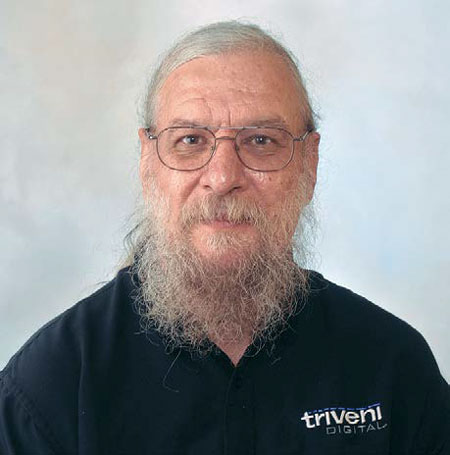In announcing the recipients of its annual Engineering Achievement Awards, the National Association of Broadcasters notes that the awards go to “individuals who are nominated by their peers for significant contributions to advancing the state of the art in broadcast engineering.” But for Dr. Richard Chernock, the recipient of this year’s Television award, one could also surmise that recognition is being given for what will be done in the future, as well.

Dr. Richard Chernock For those of us in the broadcast technology community, Chernock, chief science officer for Triveni Digital, has been a familiar face in the development of the next generation television broadcast standard, ATSC 3.0. He currently serves as chairman of the Advanced Television Systems Committee (ATSC) Technology Group on ATSC 3.0, a prominent position, especially in light of the fact that, unlike many of his predecessors, Dr. Chernock is a relative newcomer to the broadcast community, having come onboard in the late 90’s after a career in materials engineering with IBM.
“IBM had formed a group to study this new thing called ‘digital television’ to see if it might be an interesting business to go into,” Chernock said, adding that he found the technology behind MPEG “very very interesting.”
Although IBM did not follow through in its plans for digital TV, Chernock had caught the bug and transitioned to Triveni Digital about a dozen years ago.
Along the way, he came in contact with numerous individuals who helped him better understand and implement the technology and get involved in standards development. Top of the list early on was Pete Schirling, a former senior program manager for IBM who represented the company on the international MPEG Committee in the 1990s and someone Chernock characterized as an “MPEG police purist.” Another big influence was Bernie Lechner; “Bernie helped me quite a bit to understand what the standards activities were all about,” Chernock said, adding that ATSC President Mark Richer “has always been very helpful.”
What has surprised him most about the broadcast business? “Some of it was getting rid of the naivete,” Chernock said. “Early on, not having worked in standards, I had this sort of naïve idea that the best idea always wins or is going to win. I came to understand that there’s a lot of other pressures, there’s compromises that are made.”
Three months in, 2016 has already been a significant year for the emerging ATSC 3.0 standard, with signal testing in South Korea and last month’s approval of the physical layer. What does Chernock believe it’s going to take for the standard to exceed?
The professional video industry's #1 source for news, trends and product and tech information. Sign up below.
“Broadcasters need to start using it and take advantage of the new capabilities that go beyond the old business model,” Chernock said. “I think embracing it is an important thing. Another important thing is to actually educate the viewers of what kinds of services are possible.”
A few pieces of the standards puzzle remain to be resolved, including audio and interactivity, but much of the heavy lifting has been completed on ATSC 3.0, which remains on track for completion in 2017. Will the transition to 1.0 to 3.0 and the fact the new standard is not backwards-compatible be a help or hindrance to consumer acceptance? “I think it’s going to help,” Chernock said. “The amount that you can go as far as taking advantages of new technologies and moving forward is seriously limited because of backward-compatiblity. So by choosing to drop it as a requirement, you can make huge steps forward into new technologies.”
With folks like Chernock at the helm of ATSC 3.0 development, this year’s award not only honors past performance, but recognizes the important role that ATSC 3.0 will have in the future potential success of broadcasting.
Chernock will receive his award at the NAB Show Television Luncheon on Monday, April 18.
Tom has covered the broadcast technology market for the past 25 years, including three years handling member communications for the National Association of Broadcasters followed by a year as editor of Video Technology News and DTV Business executive newsletters for Phillips Publishing. In 1999 he launched digitalbroadcasting.com for internet B2B portal Verticalnet. He is also a charter member of the CTA's Academy of Digital TV Pioneers. Since 2001, he has been editor-in-chief of TV Tech (www.tvtech.com), the leading source of news and information on broadcast and related media technology and is a frequent contributor and moderator to the brand’s Tech Leadership events.

